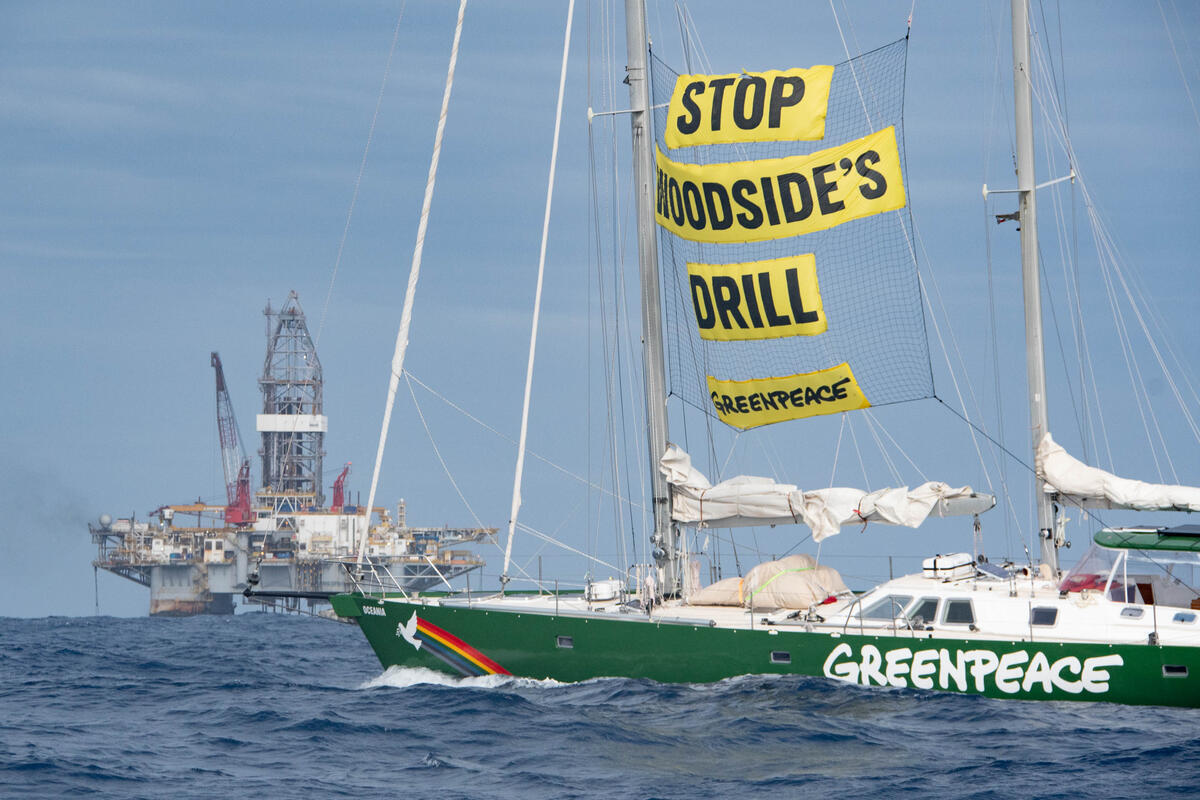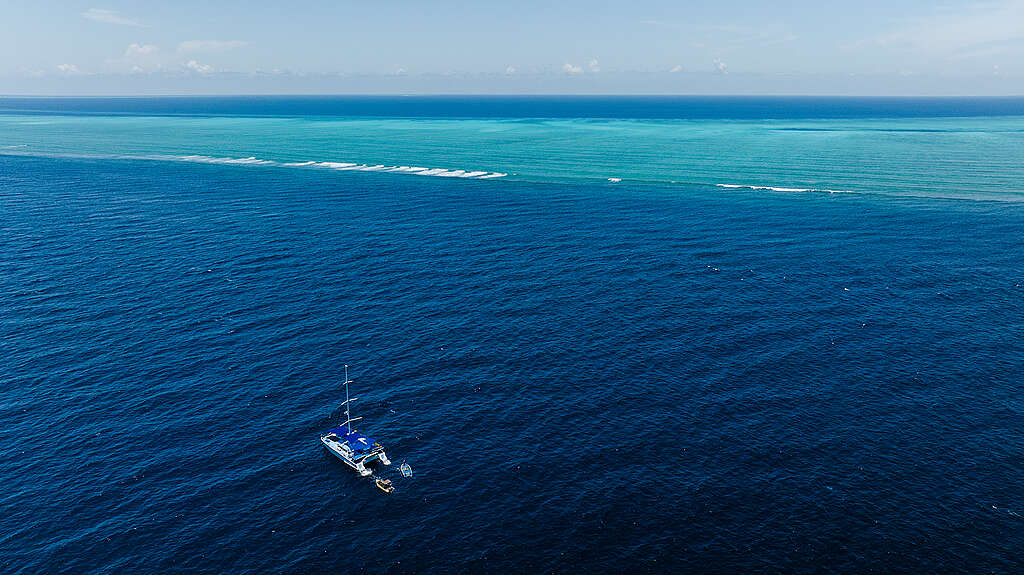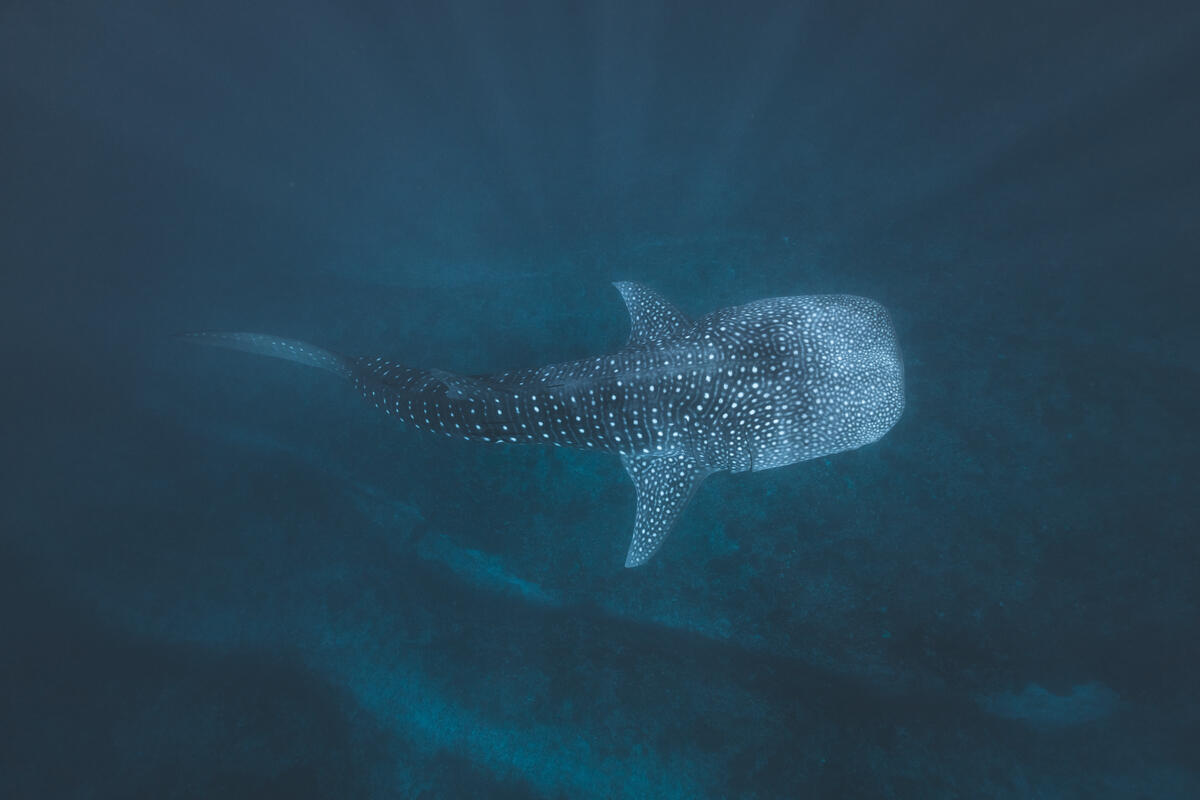© Greenpeace / Michaela Skovranova
Have you heard the latest plans from Woodside? They’ve added carbon dumping to their plans for their proposed Browse offshore gas project in the North West of Western Australia. They call it carbon capture and storage, but in reality it’s risky carbon dumping.
Help us demand an immediate rejection based on unacceptable environmental impacts.

What is carbon capture and storage?
Carbon capture and storage involves capturing, transporting and storing greenhouse gas emissions from fossil fuel power stations, energy intensive industries, and gas fields by injecting the captured greenhouse gases back into the ground.
Carbon capture and storage, when done at sea, is regulated under the Federal Government’s Sea Dumping Act – hence the name “carbon dumping”. This technology sounds promising if it was able to work at scale, but in reality it’s a risky experiment attempting to bury carbon pollution beneath our oceans.
Woodside, however, only intends to capture some of the CO₂ that already exists in the gas field as an unusable by-product and re-inject it back underground. They are not proposing to sequester any of the emissions produced from refining or burning the gas they extract. Which of course is where the vast majority of the emissions would come from.
In Woodside’s carbon dumping proposal, they also plan to conduct ongoing seismic blasting every five years in biologically important whale habitat next door to Scott Reef. It’s a dodgy addition to an already deeply problematic gas drilling plan.

But why is carbon dumping a bad idea?
There may be some instances where geological storage of carbon may be a last resort solution but definitely not as a justification to drill for more fossil fuels, creating much more carbon pollution than can be stored. Other reasons why Woodside’s carbon dumping proposal is a bad idea include that it:
- Is incredibly expensive
- Requires ongoing seismic blasting putting whales at risk of serious harm.
- Has never effectively worked at scale
- Would take money and technology away from cheaper renewables which are the actual viable option for the future of energy
- Risks the carbon dioxide leaking into the ocean.
- Is used to justify and enable further fossil fuel extraction

Where did carbon dumping come from?
Fossil fuel companies like to claim that carbon dumping is a “mature technology” but in reality it is woefully unreliable and has not been proven to work at scale. Fossil fuel companies knew as early as 1977 about the “potentially catastrophic” impacts of global warming but most have not moved their business model to focus on renewable energy solutions. Instead, they have created dubious techniques like carbon capture and storage (Carbon dumping) to prolong their polluting operations.
Chevron began the world’s first CCS project in 1972 in Texas using waste carbon dioxide from a gas field 400 kilometers away to extend the life of their oil field. After using the CO₂, they vented the gas, so there was no real climate advantage. It did work to produce more oil though.
Then in 2003, Chevron convinced the Australian government to spend $60m of the Australian people’s money on its Gorgon carbon dumping project near Karratha in WA. After over 8 years of operation the project is still unable to effectively dispose of the 80% CO₂ it promised to store (this does not include any of the CO₂ released when burning the methane). Last financial year the Gorgon carbon dumping project only removed 30% of the CO₂ instead of the promised 80%. In fact, the amount of carbon dioxide disposed of is actually decreasing as salt water and sand keep stopping the injection, making last financial years’ offering the worst yet.
This project is so embarrassing for the energy sector that our German Greenpeace Colleagues have used it as a prime example in its study of carbon dumping.

What is Woodside planning?
Woodside is now trying its hand at carbon dumping, adding it to its toxic Burrup Hub plans.
With the Burrup Hub project that was recently partially approved at a WA state level there is extra pressure on the Federal Government to make a decision on Woodside’s disastrous proposals. Federal Environment Minister Tanya Plibersek still has the chance to save Scott Reef from Woodside’s dirty gas drilling project and to prevent the extension of their North West Shelf project to 2070.
But now the Federal Government will have to also decide on Woodside’s added carbon dumping proposal. Even if successful, the proposal will provide minimal mitigation of the staggering projected 6.1 billion tonnes of climate pollution from the Burrup Hub, as well as adding to the impacts on species like the endangered Pygmy Blue Whale.
Woodside already tried unsuccessfully to push through their Carbon dumping plans but were provisionally knocked back by the federal environment department, who highlighted the risks of the new technology to our oceans and protected animals, as well as the risk of the injection site failing. Earlier, in 2022, Woodside admitted that carbon dumping at the site was “technically challenging” and a “high risk, high cost mitigation option”. But now they are keen to try again.
Along with its lack of efficacy, Carbon dumping will also involve ongoing seismic blasting in biologically important pygmy blue whale habitat. We have already seen Woodside conduct this dangerous activity and now it plans to again use underwater airguns to blast powerful sound waves towards the seabed to monitor gas reservoirs beneath the ocean floor. This can deafen whales, as well as harm marine life and threatened species.
So let’s not let the fossil fuel companies pull the wool over our eyes and again sink millions into a broken technology that allows them to continue polluting.
Woodside’s carbon dumping plans are currently under review by the federal environment department and the proposal is currently open for public comments until 16/1. Help us demand an immediate rejection based on unacceptable environmental impacts.


